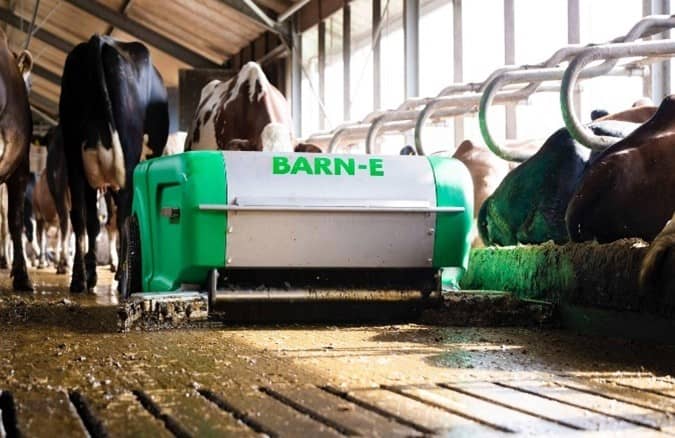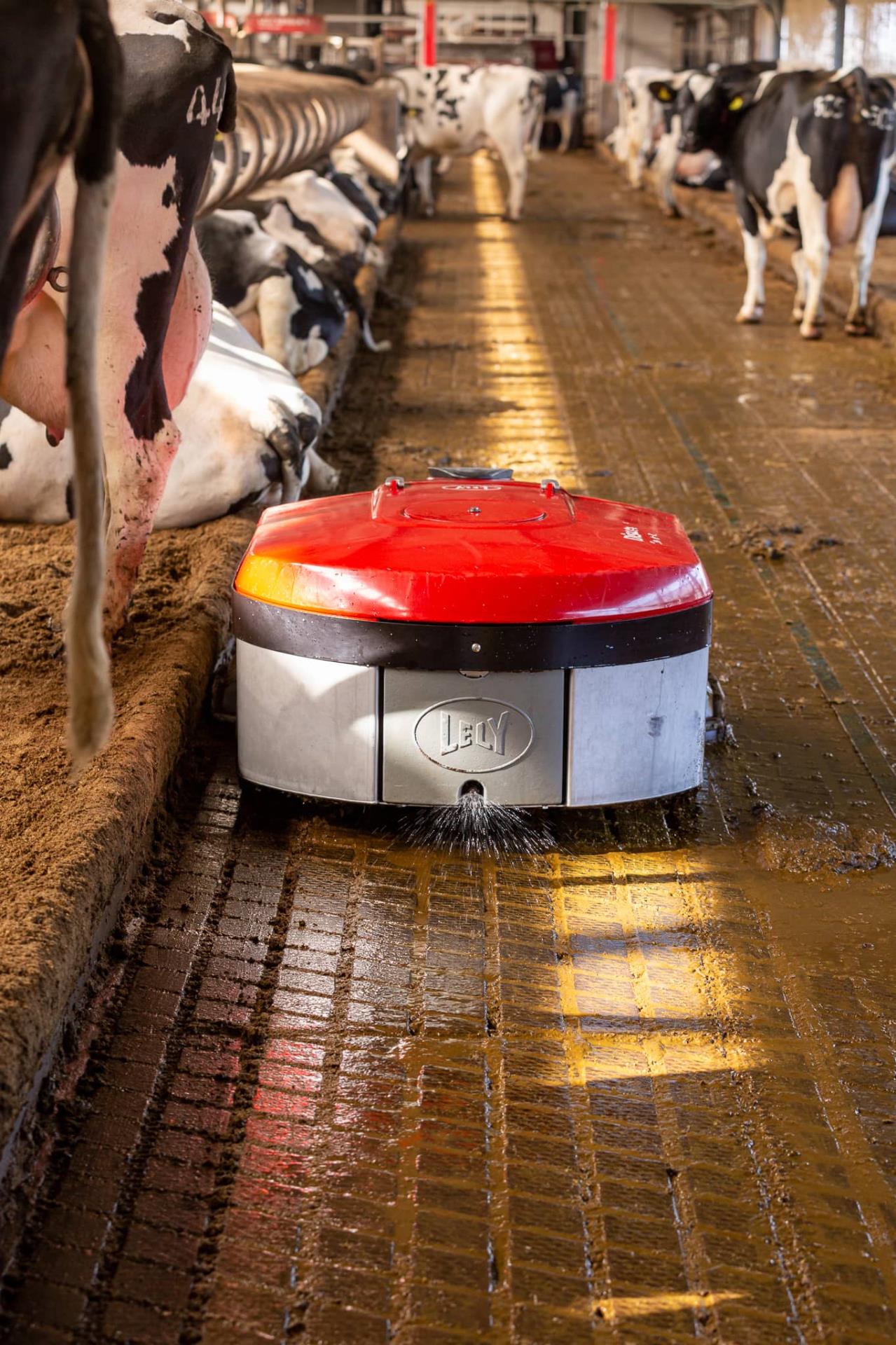With the release of the Improving Farming Productivity Grant Round 2, and up to 50% off robotic equipment, it is a good time to look at the economics of slurry scraping.

Farm consultants tips for Slurry Scraping
Slurry scraping is something that has to be done every day, at least twice a day, and either not doing it, or doing it badly can lead to dirty cows, lame cows and increased mastitis. With pressure on staff time, it is a job that could be delegated to a robot, so that valuable labour can be utilised in a more productive way.
We all know about the effect on cow lameness if the passageways aren’t kept clean, or the impact of mastitis from cows stepping up onto the cubicle beds with slurry on their feet, and both mastitis and lameness have a significant impact on dry matter intakes, subsequent milk production and cow fertility.
Many farmers have invested in automatic slurry scrapers over the years, which are great due to the frequency that the passageways can be cleaned without staff cost. But there is always the impact of the wave of slurry in front of the blade which can put slurry higher up the cow’s hoof and can cause hoof impacts with blade.
Types of Robot Scrapers
Robots with blades that push the slurry regularly into slatted channels throughout the building, and robots that either scrape up the slurry or suck it up into a tank and empty into a reception pit. Both use electric as the power source, rather than diesel, so are very energy efficient.
With the robots with blades that push the slurry in front of it, you either need fully slatted passageways, or slatted channels regularly along the passageways. With the robots that pick up the slurry, there is obviously no buildup of slurry in front or the machine - but they are more expensive to buy.
We have recently analysed the cost of the Discovery Collector for a 275 cow herd:
Tractor and Scraper
| Assumptions | Unit Rate | Daily Cost |
|---|---|---|
| Labour - 4 hours a day | £20/hour | £80/day |
| Diesel - 6 litres/day | 80p/litre | £4.80/day |
| Maintenance of tractor and scraper | £1,100 x 2 | £6/day |
| Depreciation on tractor and scraper over 10 yrs | £28,000 purchase value | £8/day |
| Interest if HP required | 8% | £3/day |
| Total Cost | £102/day |
Moving to 3 Robotic Collectors
| Assumptions | Unit Rate | Daily Cost |
|---|---|---|
| Electric 3kWh/day | 30ppkWh | £2.70/day |
| Maintenance cost | £1,500/year | £12.50/day |
| Depreciation on Collector over 10 yrs | £99,000 purchase value | £27/day |
| Interest if HP required | 8% | £11/day |
| Total Cost | £53.20/day |
Potential saving of £17,812/year
Which Slurry Scrapers are best?
But of course, unless the farmer goes to fully robotic scraping the farm will still need a scraper tractor which will need maintaining - although it will get less wear and tear.
In summer when the yards are dry, the Collector sprays water in front and behind itself to improve slurry pickup. This will use up to 1,500litres water/day which will therefore need to be collected and stored – equates to around 45m3/collector/month.
But you normally only have to use the water when the weather is such that the slurry dries out in the passageways.
The number of cows a Discovery Collector can scrape depends on yield per cow, but is normally around 100 - 120 cows. And it also depends on your yard area and layout – can be from 500 – 750m2 per machine.
In terms of the infrastructure you need to install one, there needs to be a collection tank for the Discovery to empty into, with a 15-18” discharge pipe, or go directly into a channel to the slurry store.
The recharging point needs to have a 13 amp power supply and a water supply, and it comes in a protective cage to make it waterproof.
The Joz Barne E collects the slurry in a tank, but in a different way. The slurry is collected at the front of the machine and scraped into the tank with a rotating blade.
This should make it more able to cope with sand bedding, but we are unsure what the maintenance implications of this would be.
We have seen several Collectors out on cattle farms, seen the basic Joz scraper for slatted floors, but we have not yet seen the Barn E out on farm.
If your sheds have a reasonable layout, and you have significant pressure on your time, then looking at robotic slurry scraping is well worth considering with the current grant funding options available.

Interested in looking at robotic scraping for your farm?
Contact our farm consultants for assistance with investigating the viability or a grant application



